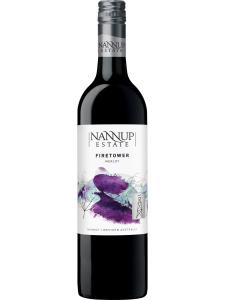-
中文名:西澳洲
-
英文名:Western Australia
-
位置:
-
葡萄园面积:公顷
-
葡萄酒特点:
-
产区产量:
-
土壤:
Western Australia is the largest of the eight administrative zones and territories of Australia. Covering the entire western third of the vast island continent, 'WA' (as it is widely called) spans 1000 miles (1600km) from east to west and roughly the same distance from north to south. This makes it the second-largest administrative sub-division of any country in the world – bigger than Alaska and Texas combined.
The Western Australian wine regions, of which Margaret River is the most famous, are clustered in the state's cooler, coastal, south-western corner. The northern and eastern two-thirds of WA are too hot – and either too dry or too humid – to support quality viticulture. The north-western corner is the hottest area of Australia as a whole, with summer temperatures surpassing even those of the country's famous semi-desert 'Red Centre'; a temperature of 122.9F (50.5C) was recorded in Pilabra in 1998.
The giant flag at Voyager Estate, Margaret River
© Jonathan Reeve
By contrast, the climate of the south-western WA coastline is relatively cool, tempered by the presence of the Indian Ocean to the west and the Southern Ocean (also known as the Antarctic Ocean) to the south and east. Although it rivals the Hunter Valley in terms of low latitude (lying at 33 degrees south), the climate around the state's south-western cape is more akin to that of Bordeaux, and the most-successful grape varieties here reflect this. It is not just coincidence, then, that many winemakers from this area aim for a more European wine style than their counterparts further north – or those from New South Wales and South Australia. Margaret River, in particular, is renowned for its more-balanced, elegant wines, which contrast with the powerful, fruit-driven wines of the regions further east.
Geographically, the wine regions of Western Australia can be split into roughly three groups: those around the state capital, Perth (the Swan Valley, the Perth Hills and Peel); those along the south coast (from Pemberton in the west to Albany in the east); and those around the southern end of Geographe Bay (Margaret River and Geographe). The emerging Blackwood Valley region is home to some of Western Australia's most 'continental' vineyards, although these are, at most, only 70 miles (110km) from the Indian Ocean coast.
In terms of soils, there is considerable variation between the regions. Most obvious is the shift from sandier, less-fertile soils in the coastal areas to the mineral-rich, darker soils further inland. In Manjimup, south of Perth, the sands gradually give way to gravelly soils rather than loam, although loose loess is found on the higher slopes there. Just to the west, Geographe's vineyards enjoy the cool, free-draining properties of gravelly limestone, which couples well with the cool maritime breezes blowing inland in the morning and back out to sea in the afternoon. The square-edged peninsula which forms the Margaret River region is formed entirely by the Leeuwin-Naturaliste ridge – a low granite and gneiss formation which runs for nearly 60 miles (100km) between Cape Naturaliste and Cape Leeuwin. These hard rock strata are covered by laterite soils, rich in trace elements such as aluminum and iron – the latter of which gives them their characteristic red tint.
Although Western Australia has a wine style noticeably distinct from the rest of the country, the grape varieties used here are definitively Australian. Chardonnay, Cabernet Sauvignon, Merlot and Shiraz are the most widely planted vines in the state and do particularly well. Riesling is also very successful – more so in the continental Great Southern climes of Frankland and Mount Barker. Western Australia's trademark wine is a blend of Sauvignon Blanc and its famously grassy Semillon. This classic white Bordeaux blend is casually referred to as 'SSB' or 'SBS', depending on the proportions of each variety, and is often the entry-level wine by which a producer is judged. Cabernet Sauvignon varietals and blends occupy the premium price spots, with Cullen, Moss Wood, Voyager Estate and Vasse Felix producing prime examples.
Western Australia's wine industry has changed beyond all recognition since the 1970s. Where once almost all of its wine came from the Swan Valley, now it is the regions further to the south which dominate its vinous output. That is not to say that the Swan Valley vineyards have disappeared (there has been only a slight decline); rather, the other regions have seen dramatic and rapid expansion. Between 1999 and 2009, the state's annual crush almost doubled, with a record-setting peak in the bumper high-yielding season of 2005 which has still to be matched today. In the same period the annual harvest in Margaret River almost trebled, as it did in the Great Southern region. A second – complementary – trend can also be observed in the state's harvest figures, which show that Western Australian wines are increasingly made from estate-grown fruit. At the turn of the 21st century, almost 60% of WA wines were made from grapes shipped to wineries from other estates and regions; by 2009 that figure had fallen to just 35%. This clearly demonstrates the growing respect and investment being accorded to Western Australia's terroirs.
下属产区


